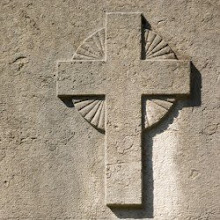St. Paul writes now and again that Christ our Lord is a “mystery,” mysterium, and indeed the holy Church, too, with Christ, her Bridegroom, can be called a “mystery” [Col. 1:26-27; 2:2; 1 Tim. 3:16; Eph. 5:32]. In times past—when I had to permit myself to be called a doctor of Holy Scripture—I considered this a straightforward expression that I understood very well. But now that I, praise God, have again become a poor student of Holy Scripture and understand less and less as time goes on, I am beginning to look on these words with wonder, and experience, I find, supplies this gloss” that it must be a mystery indeed. For no matter how brightly and clearly as the apostles preached about it—even with miracles—nevertheless it still remains hidden and secret to the very greatest and most clever people on earth, just as He says in Matthew, chapter 11 [:25]: “You have hidden these things from the wise and clever, but have revealed them to the children,” etc.
Is this not a sufficient wonder? Is that not enough of a secret? It is preached so manifestly, and it shines more brightly than the sun, and is also confirmed with so many great miraculous signs (which no man can deny that God must be doing). And nevertheless, here the very greatest and most clever, the holiest and best people remain blind, deaf, and senseless, so that they cannot see it, hear it, or feel it. Answer me that riddle! How is that? There is nothing more manifest, and yet nothing more secret; nothing is more comprehensible than Christ in the manger and on the cross; nothing is more incomprehensible than Christ at the right hand of God and Lord over all. So it is also with the Word that preaches about Him.
Martin Luther, Luther’s Works, American Edition, ed. Christopher Boyd Brown. vol. 60, Prefaces II, (Saint Louis: CPH, 2011) 283.





No comments:
Post a Comment